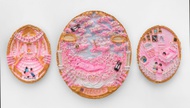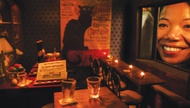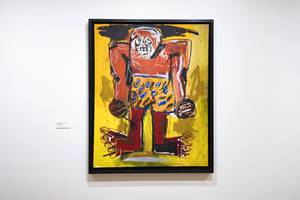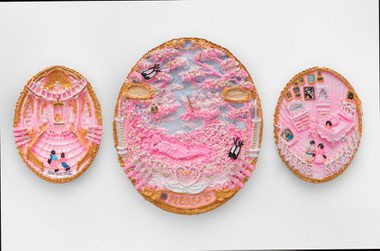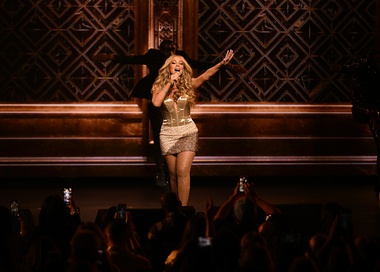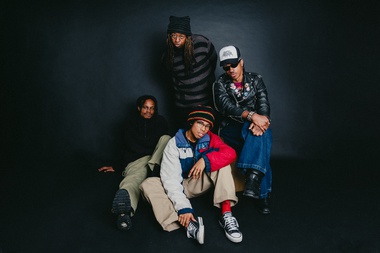Back before the unpredictability of the past four years—before a pandemic, norm-breaking presidency and runaway political polarization—a small group of Las Vegas artists sat in a living room discussing the storm on the horizon. The 2016 election season was in progress, and they wanted to do something to make a difference. So these concerned creatives—or “bleeding-heart weirdos,” to use the ironic words of one member—founded the Desert Arts Action Coalition.
“The first meeting was like four of us sitting in a room together being like, ‘Can you believe this? OK, well, what do we got to do?’” artist and founding DAAC member Brent Holmes says. “Then it slowly grew, and in the last year, it started to take more shape—with the election, with COVID, with all the crises that were going on, everybody wanted to step up.”
The question of whether artists should pause their painting of pretty pictures in order to join the fray might seem like it’s still under debate … at least to casual observers. But it’s long been solved. Every aspect of art is political—from which artists become famous to which subjects they choose to where their art is displayed, and on and on.
With all that in mind, DAAC’s stated mission is being “dedicated to equality, empathy, justice & liberty, and to protecting democracy, the environment & one another.” The group members—all part of the Nevada arts community, either as artists or patrons—include Holmes, Wendy Kveck, Demecina Beehn, Denise Duarte, Rebecca Gabrielle Hanley and many others.
“The whole idea is, we as artists start to fulfill our obligation as social actors and cultural actors and actually help build a better world,” says Holmes, who has done a variety of things for DAAC over the years, including graphic design, photography, marketing and communications.
The hybrid arts and activism organization has supported both political and artistic causes. Past initiatives have included “get out the vote” campaigns; arts advocacy; signmaking events; and flyers for protest groups.
Artist and DAAC member Beehn cites one big achievement. At the most recent state legislative special session, DAAC was able to quickly acquire 350 signatures for a letter to Gov. Steve Sisolak. They requested more arts funding, while taking into consideration budgetary cuts. Beehn says that the arts shouldn’t be the first thing sacrificed for belt-tightening, because it contributes significantly to the GDP, often more so than more “traditional” industries such as agriculture or transportation.
“I think our success is us really starting to, over the past few years, pull the art community together and help bring much more of a political focus to the world that we do,” Beehn says.
Because of their unique role as something of a support organization, Holmes says, DAAC has become more “reactionary” than other, more traditional groups. “A lot of activist organizations have a solid five-year plan,” Holmes says. “We’re like, ‘Who’s doing what, and where can we help out?’”
So how might DAAC change now that its initial catalyst is leaving the White House to be replaced by a Democratic president? Holmes says the mission will remain unchanged. “First and foremost, we’ve done more work on a local level than a federal [one],” Holmes says. He says that while he expects the new administration to be less antagonistic to the cause, he doesn’t anticipate a magic shift toward progressive goals like universal health care and Indigenous rights. “I don’t think anybody is sitting there going, ‘Yeah, we can all take a break.’”
Beehn says she has learned a lot about how the city functions since joining DAAC, including “where we can expand, where we’re lacking and how we’re different from other cities. Vegas is a weird city where you don’t even know whether the mayor is a Democrat or Republican,” Beehn says. “People often just try to stay apolitical. But we can’t. We have to advocate.”
One of DAAC’s upcoming projects features a collaboration with the Forced Trajectory Project and Families United for Justice. They are curating a gallery exhibition shining light on the victims of police brutality at West Las Vegas Library. They are speaking with victims’ family members and sharing their stories. Beehn says she can’t share many more details, because the planned January show is still in the early stages, but the hope is to pair artists with families to create new works around their lived experience.
Beehn says that through DAAC, she has seen how many local organizations are already aligned with the art community’s ideals. And so the new goal is to see “how can we cross-pollinate, share our resources and help strengthen the voice of our community.” It seems that they are already well on their way.

